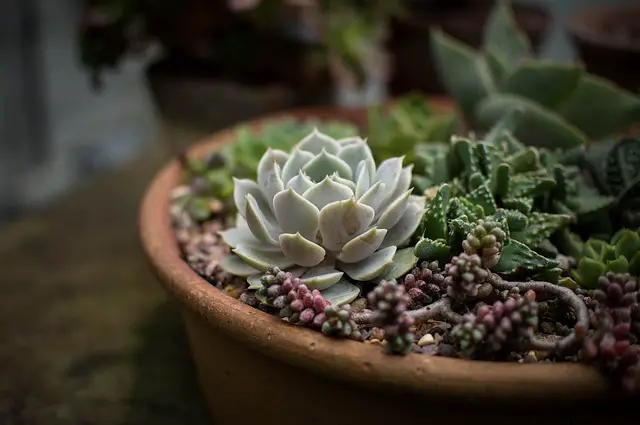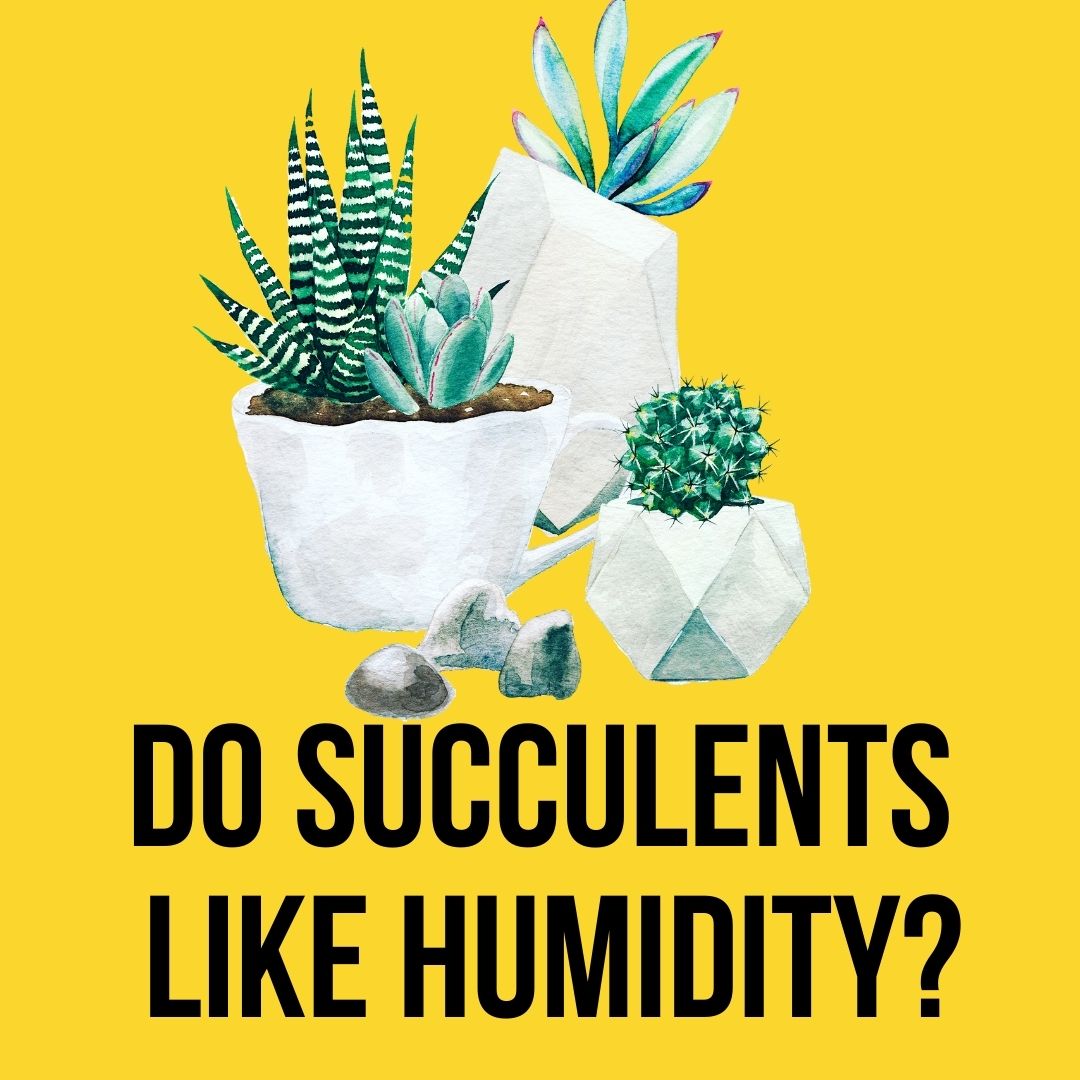Plant parents might often wonder, does humidity even matter? The short answer is yes, in more ways than one might consider. Succulents dislike high humidity as it strays far from their ideal environment.
Don’t be discouraged though. There is a variety of these shrubs suited to your lifestyle.
Today we will tell you why do succulents like humidity, why humidity is important, the ideal conditions for succulents, and some other questions as well.
What is Humidity?
It refers to the water vapor in the air. High humidity means an increased percentage (above 50%) of moisture in the air. A higher percentage means more water vapor. Excess moisture is bad news for your little succulent friend.
Why is Humidity Important?
Succulents thrive in dry air and soil. They store can store water in their thick, fleshy leaves for a long time. A moist atmosphere hinders the drying process, which can lead to fungal growth. The ideal rate ranges between 10% – 30% humidity.
Do Succulents Clean The Air? Improving Air Quality
Do Succulents Like Humidity?
Your plant can survive high humidity, but not for long. Continued exposure stunts growth and harms your succulent’s overall health. The damp and warm environment is ideal for fungi and bacteria, which results in rotting, and eventual death.
A general rule of thumb is to take countermeasures at above 40% humidity for most succulents.
When you get a little too hot and stuffy, it is an obvious sign of elevated humidity. The succulents in your garden or various rooms are also experiencing a similar torment.
The excess water in the air around the succulent leaves can result in leaves sticking together, molding, and rotting. Young succulents or their soft family members are more prone to these perils.
Ideal Condition for Succulents
The best care routine depends largely on the type of succulent. The types with thick, sturdy leaves are well-equipped to brave the elements. On the other hand, their softer, thin-leaf counterparts will have a difficult time outside their comfort zone.

Humidity-related issues can be easily resolved by reading up on your specific type of succulent to best suit its needs. Your hardy Agave plant has a different care regime than your Echeveria. They will have a better chance of survival in a dry environment than in a wet one. If you live in a humid area, consider moving your succulent indoors.
- Succulents love the sun. 4-6 hours of sun a day is sure to keep your little spiky friend happy.
- A spot by the south or east-facing window is great for both you and the succulent. Ample sunlight promotes ventilation and keeps your succulent dry and healthy.
- Dry, sand-mixed soil is highly recommended.
- Prioritize draining to prevent wet roots. You may use a drainage hole or simply put a layer of crushed rocks under the soil to help it dry faster.
- It is crucial to consider the type of rock you are using. Make sure to wash your rocks well. Some variations may contain additional minerals which could harm the succulent.
- Consider planting your succulent in a breathable container i.e. ceramic or terracotta.
- Practice caution while handling these pots. They tend to be very heavy, especially after assembly.
- Your succulent enjoys drier environments. Water them sparingly, but keep things consistent.
- The use of tap water is a no-no. They might contain minerals you don’t want in your soil. Opt for distilled or rainwater.
- Top dressing for your succulents adds to their beauty. It also protects the succulents from excess water and rotting.
- Too much or too little humidity can result in different health problems, so it is important to control the moisture around your plant.
- Make a care routine for colder days to accommodate their wintertime needs.
- In humid climates, add pumice to your soil to improve moisture absorption.
- Never leave water on the leaves of your succulent as they can quickly grow mouldy. You can save a mouldy succulent by cutting off the infected areas.
Dealing with High Humidity
The most convenient way to combat excess moisture is to let your succulent bask in the sunlight. Consider grouping similar succulents with little space in-between to repel the effect of humidity on them. Other ways to protect your succulent in a humid climate are as follows:
Grow Light
While it is smart to have a grow light handy for any succulent, it is your best friend in the tropics. A grow light aids especially when you don’t have a usable windowsill. It provides the light succulents need, alongside keeping the soil dry.
Winter routine
Most succulents barely grow, if at all, in winter. You will rarely need to water them. The use of moderately warm water during this time will regulate better absorption. Allow the moisture to dry completely before you water your plant again.
A grow light does wonders for your succulent in winter.
Keep the pot away from your indoor heating element to prevent excessive dryness. It is recommended to keep a water source nearby for your succulents to draw moisture.
Controlling Air Circulation
Consider investing in a humidifier or dehumidifier depending on your needs. Humidifiers mist the room when the air is too dry. A dehumidifier does the opposite, where it collects the humid air, and releases dry air back into the room.
Frequently Asked Question
Do succulents need to be re-potted?
Your succulent will eventually outgrow its container. It will need re-potting to prevent bound roots.
Why is my replanted succulent dying?
Replanted succulents can die from transplant shock, imbalance in ideal condition, etc.
Why is there a stem growing from the middle of my succulent?
The deficiency of sunlight triggers a process called etiolation where a stem lengthens in search of sunlight.
Why is my succulent faded into a blue-green color?
Lack of sunlight causes such discoloration in succulents. More time under the sun and/or use of bright light is sure to aid in nursing your succulent back to health.
What is top dressing?
A layer of inorganic material i.e. gravel, pebbles, etc. over the top of the soil for decorative and plant health purposes is called top dressing.
Should I put my succulent in the bathroom?
Your bathroom might be a spectacular spot for your succulent. Propping it by the bathroom window is good for your plant. It also adds to the beauty of your space. Moving the pot elsewhere from time to time and controlling the heat of your shower will help care for the succulent.
Final Thoughts
Although many succulents aren’t suited to high humidity, anyone can grow healthy and beautiful succulents with the right research. Knowledge of your plant’s requirements is essential to improve its quality of life.
Proper treatment of your succulents is sure to be rewarding for you. They are known to be good air filters around your house aside from elevating your home decor. Through trial and error, you will slowly, but surely achieve your ideal succulent care as they can be quite subjective. Knowing the right way to manage humidity is way up there for the best care you can give to your succulents.
Hope this answers your questions about if succulents like humidity or not. if you have any more questions feel free to let us know below.
